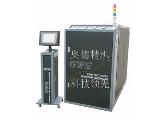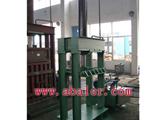What issues should be noted when installing a diesel engine on a garden greening sprinkler truck? Car semi-
The repaired diesel engine of Mu can be reinstalled on the car after debugging and inspection. When necessary, a brand new diesel engine can be installed on the car. The installation of the diesel engine should be carried out in the reverse order of disassembly, and the following points should be noted: 1. Before installing the diesel engine, check the integrity of the chassis, and make necessary repairs according to whether there are cracks, deformation, loose rivets, rust, and paint peeling, etc. 2. Replace all the suspensions of the diesel engine and tighten the fixing bolts under idle conditions for long-term use. 3. Assemble the fixed bolts on the clutch, transmission, and drive shaft according to the specified torque to ensure reliable power transmission of the diesel engine. 4. Replace the sealing gaskets and connect all exhaust, air, fuel, compressed air, coolant, and steering hydraulic oil pipelines to ensure smooth flow and no leakage. 5. Connect all operating mechanisms to ensure reliable connections, and check whether each operating mechanism is easy to operate and whether the free travel and working travel of each pedal meet the regulations when the cab is returned to the normal driving condition. If not, readjust them. 6. Ensure that the electrical system works reliably, the starting device operates smoothly, and the instruments work reliably. 7. After the vehicle trial run, check the assembly situation again, make comprehensive adjustments once, and ensure reliable operation during the running-in period. 8. At the end of the running-in period, conduct a comprehensive inspection and adjustment of the entire vehicle, tighten the fixing bolts, and then proceed with normal operation if everything is correct. How to deal with the car "whimpering" halfway: It's inevitable to encounter your beloved car "whimpering" when driving out. If a fault or obstacle occurs during driving and there is no spare parts supply temporarily but it needs to be used urgently, we have to take some emergency repair measures. Here are some simple and feasible emergency repair methods introduced as follows: 1. Fuel tank damage: When using a motor vehicle, if you find the fuel tank leaking, clean the leaking area and apply soap or chewing gum to temporarily block it; epoxy resin adhesive can also be used for better repair. 2. Ruptured oil pipe: When the oil pipe ruptures, clean the ruptured area, apply soap, wrap a cloth strip or tape around the ruptured area of the oil pipe, and tie it tightly with wire, then apply another layer of soap. 3. Broken oil pipe: When the oil pipe breaks, find a rubber or plastic tube that fits the diameter of the oil pipe and sleeve it. If the connection is not tight enough, tighten both ends with wire to prevent leaks. 4. Sand holes in the cylinder head causing oil or water leaks: Select an appropriate gauge of electrician's fuse wire, gently hammer it into the sand hole, which can eliminate oil or water leaks. 5. Oil pipe joint leaks: During the use of a motor vehicle, if the oil pipe joint leaks, it may be due to the lack of seal between the oil pipe bell mouth and the oil pipe nut. Wrap cotton thread around the bottom edge of the bell mouth, then tighten the oil pipe nut and the oil pipe joint; alternatively, chew bubble gum or maltose into a paste, apply it to the oil pipe nut seat, and let it dry and solidify to serve as a seal. 6. Ruptured inlet and outlet water hoses: For small ruptures, wrap the leaking area with a piece of cloth coated with a layer of soap; for larger ruptures, cut off the broken part of the hose, put a bamboo or iron pipe in the middle, and tie it tightly with wire. 7. Fan belt breakage: Tie the broken belt with wire or drive the car intermittently. 8. Stripped screw holes: Stripped screw holes can cause oil leaks or loose connecting rods, making it impossible to work. Flatten the original screw with a hammer to increase its width on both sides and secure it properly, but avoid multiple disassemblies. Repair during the next maintenance. 9. Diaphragm or fuel pump diaphragm rupture or breakage: Disassemble the fuel pump and remove the diaphragm, use bakelite board, electrician insulation bakelite, or plastic sheet to saw and file into the original shape and size, polish it, and install it. 10. Valve spring breakage: After the valve spring breaks, remove the broken spring and reverse the two broken sections for use. Alternatively, find a 1mm thick steel plate, cut it into a circular piece 1mm larger than the spring diameter, cut a central hole smaller than the spring diameter by 4mm, cut 4mm long slits every 6mm along the outer edge, fold every other piece after cutting to form double-sided spring seat grooves, then reverse the spring and install it into the steel plate groove for use. The above content is jointly released by the official website of Sanitation Garbage Truck (http://www.clwlu.com/)|www_clwlu_com and professional garbage truck manufacturers (http://www.clwwcw.com/)|www_clwwcw_com, with more wonderful content available.



